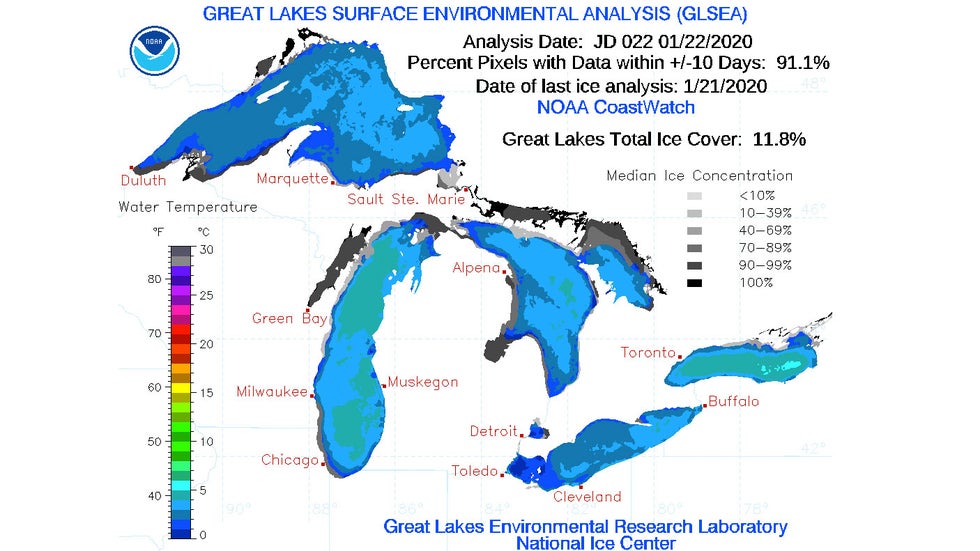Ice cover on Lake Erie has barely made an appearance so far this winter despite it being the most prone of the Great Lakes to freezing over.
Thursday's ice coverage on Lake Erie was 2.4%, or near a record low for Jan. 23, according to the Great Lakes Environmental Research Laboratory. Only two other years since 1973 have had a lower amount of ice coverage on Jan. 23, most recently in 2007.
Lake Erie is the shallowest of the Great Lakes, which usually makes it freeze fastest in winter. Its average ice coverage on Jan. 23 is easily the highest of the Great Lakes at 49.1%.
Temperatures have been much above average in the East so far this winter, leading to the dearth of ice.

Cleveland, for example, had its second-warmest Dec. 1 to Jan. 21 on record, according to NOAA Regional Climate Centers. It was the eighth-warmest such period in Buffalo, New York, and Toledo, Ohio.
There are several impacts from the lack of ice.
First, since the lake remains wide open, significant lake-effect snowfall can still occur in the snow belts of northeast Ohio, northwest Pennsylvania and southwest New York.
The absence of ice leaves the shoreline vulnerable to erosion from battering waves stirred up by strong winds. When ice is present, it can help act as a barrier by preventing high surf from crashing along the coast.
Ice fishing is also halted on the lake when there is no ice or the ice is too thin. A fishing guide told Cleveland.com he was considering putting boats back in the water if significant ice doesn't form soon.
Lake Erie isn't alone in lacking ice.
As of Jan. 21, the five Great Lakes combined had just 11.8% ice coverage, which is nearly half of the average for that date since 1973.

Great Lakes ice cover usually peaks later in winter, sometimes in late February or early March. The current conditions are not reflective of what the peak might be in the next month or two because that will depend on long-term weather patterns.
The average yearly peak ice coverage is 55.7%. Lower than average peak ice coverage is predicted this year, NOAA ice forecaster Jia Wang told Cleveland.com
The growth of ice cover is maximized when conditions are persistently cold and winds are light. Repetitive spells of mild temperatures and/or windy conditions are inhibitors for ice growth.
The Weather Company’s primary journalistic mission is to report on breaking weather news, the environment and the importance of science to our lives. This story does not necessarily represent the position of our parent company, IBM.
The Weather Company’s primary journalistic mission is to report on breaking weather news, the environment and the importance of science to our lives. This story does not necessarily represent the position of our parent company, IBM.

No comments:
Post a Comment